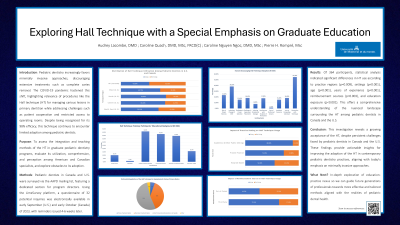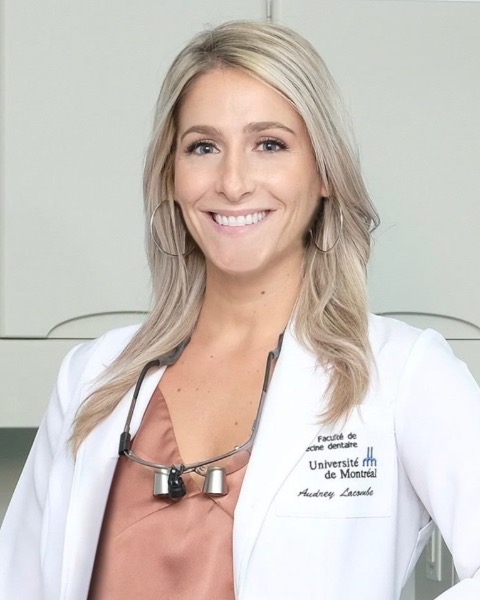Restorative
295 - Exploring Hall Technique with a Special Emphasis on Graduate Education


Audrey Lacombe, DMD (she/her/hers)
Pediatric Dental Resident and Master in Dentistry Candidate
Université de Montréal
Université de Montréal
Montreal, Quebec, Canada- CQ
Caroline Quach, DMD, MSc, FRCD(C)
Université de Montréal
- PR
Pierre Rompré, MSc
Université de Montréal
- CN
Caroline Nguyen Ngoc, DMD, MSc
Associate Professor - Department of Restorative Dentistry
Université de Montréal
Montreal, Quebec, Canada - BD
Basma Dabbagh, DMD, MSc, FRCDC, ABPD
Assistant professor, Co-Director, Pediatric Dentistry Program
Université de Montréal, Montreal, QC
Montreal, Quebec, Canada
Presenting Author(s)
Co-Author(s)
Research Mentor(s)
Program Director(s)
Introduction: Pediatric dentistry increasingly favors minimally invasive approaches, discouraging aggressive treatments like complete caries removal. The COVID-19 pandemic hastened this shift, highlighting relevance of procedures such as the Hall technique (HT) for managing carious lesions in primary dentition while addressing challenges like patient cooperation and restricted access to operating rooms. Despite being recognized for its 98% efficacy, this technique continues to encounter limited adoption among pediatric dentists.
Purpose: To assess the integration and teaching methods of the HT in graduate pediatric dentistry programs, evaluate its utilization, comprehension, and perception among American and Canadian specialists, and explore obstacles to its adoption.
Methods: Pediatric dentists in Canada and the U.S. were surveyed via the AAPD mailing list, featuring a dedicated section for program directors. Using the LimeSurvey platform, a questionnaire of 32 potential inquiries was electronically available in early September (U.S.) and early October (Canada) of 2023, with reminders issued 4-6 weeks later.
Results: Of 364 participants, statistical analysis indicated significant differences in HT use according to practice regions (P=.009), settings (P < .001), age (P < .001), years of experience (P < .001), reimbursement sources (P=.003), and education exposure (P < .001). This offers a comprehensive understanding of the nuanced landscape surrounding the HT among Canadian and American pediatric dentists.
Conclusion: Our investigation reveals a growing acceptance of the HT, despite persistent challenges faced by American and Canadian specialists. Our findings provide actionable insights for improving the adoption of HT in contemporary pediatric dentistry practices, aligning with the industry's emphasis on minimally invasive approaches.
Identify Supporting Agency and Grant Number:

.jpg)